In an era where every business fights for online visibility, content marketing has emerged as a beacon of hope for businesses aiming to establish genuine connections. But beyond building brand awareness and trust, there’s an even more enticing goal: lead generation.
With the right strategies, content marketing can become a lead generation powerhouse, delivering potential clients to your doorstep.
Buckle up as we explore the intricacies of this art, understanding its core, and unveiling strategies that transform passive readers into active leads.
The Foundation of Content Marketing
Content marketing is not just about crafting articles; it’s an intricate system built on valuable, consistent content aiming to attract a defined audience and drive profitable actions. It encompasses blogs, videos, infographics, podcasts, and anything that communicates your brand’s voice without a direct sales pitch.
Relationship between content quality and lead generation potential
A potential lead can’t be wooed with mediocre content. High-quality content serves as the magnet, attracting not just a high volume of traffic, but the right kind of traffic. By addressing pain points, offering solutions, and presenting yourself as an industry authority, you increase the likelihood of a visitor evolving into a qualified lead.
Importance of understanding the target audience and their needs
Imagine talking about advanced software development techniques to someone who’s just looking to start a blog. Understanding your audience ensures that your content resonates, addresses specific problems, and offers tangible solutions. Detailed buyer personas, including demographics, interests, and behaviors, are essential to tailor your content to the audience’s exact needs.
Setting Clear Objectives for Content-Driven Lead Generation
Every piece of content should be tailored. The first step? Knowing who you’re addressing. Are they tech-savvy millennials or senior executives? Knowing your demographic aids in creating content that strikes a chord. Additionally, understanding their challenges means your content can be solution-oriented, making it irresistible.
Setting measurable KPIs for your content marketing campaigns
Without clear goals, content marketing can be like shooting in the dark. Whether it’s a specific number of new email subscribers, a set traffic increase, or a conversion rate, clear KPIs ensure you can measure and optimize for success.
Differentiating between ‘vanity metrics’ and metrics that drive leads
While high page views might boost ego, do they translate to leads? Distinguishing between metrics that look good and those that positively impact your bottom line is crucial. For instance, a high dwell time or a growing email list might be more indicative of lead generation than just the number of page views.
The Content Marketing Funnel Explained
Every marketer should visualize their content strategy as a funnel, guiding potential customers from awareness to conversion. This funnel isn’t just a conceptual tool; it’s a strategic framework that dictates content type and distribution.
Top of the funnel (Awareness): Blog posts, infographics, videos
This is where the journey begins. At the awareness stage, potential leads are likely encountering your brand for the first time. Content here aims to educate, inform, and provide value. Blog posts might tackle industry trends or common challenges. Infographics can visually break down complex topics, while videos might offer a mix of entertainment and education. It’s essential to cast a wide net, appealing to a broad audience, while ensuring content is shareable, further amplifying its reach.
Middle of the funnel (Consideration): eBooks, webinars, detailed guides
By this stage, your audience recognizes they have a need or problem. They’re actively seeking solutions. Your content should reflect this shift. eBooks offer in-depth insights into specific challenges, webinars allow for interactive learning and expert advice, while detailed guides can provide step-by-step solutions. The aim here is not just to provide value but position your brand as the go-to solution.

Tactics to Optimize Top-Funnel Content for Lead Generation
Top-funnel content, primarily focused on awareness, plays a pivotal role in the initial stages of lead generation. Let’s dive into the strategies that can transform your top-funnel content from ordinary to a lead generating powerhouse:
SEO Strategies to Maximize Visibility
Your content can’t generate leads if it remains invisible. Utilize Search Engine Optimization (SEO) to ensure your content ranks high on search engines. Start with keyword research to find terms your target audience is searching for. Then, integrate these keywords naturally within your content, meta descriptions, and tags. Remember, the algorithm appreciates content that’s user-friendly and relevant.
Crafting Compelling Headlines and CTAs
Your headline is often the first thing a potential lead sees. It must spark curiosity and encourage the click. Once inside, end with a strong Call-to-Action (CTA) that directs your audience towards a desired action – be it signing up for a newsletter, downloading an eBook, or simply proceeding to another related article.
Utilizing Social Proof and Authority Badges
Establishing trust is paramount. Displaying testimonials, user reviews, or logos of reputable brands you’ve partnered with can increase credibility. If you’ve been featured in notable publications or have received industry-specific certifications, showcase them. In the digital age, trust is a currency, and social proof acts as an endorsement of your brand’s value and reliability.
Leveraging Middle-Funnel Content for Email Capture
The middle funnel is crucial. Here, your prospects are aware of your brand and are searching for more detailed information. By leveraging mid-funnel content effectively, you can capture those precious email addresses, a gateway to more personalized marketing
Creating Lead Magnets
Offer irresistible value in the form of checklists, templates, or eBooks that demand an email in exchange. For instance, a B2B company might offer a detailed guide on industry best practices, while a B2C health brand could provide a weekly meal planner.
The Psychology Behind Effective CTAs
It’s not just about what you’re offering, but how you present it. Color contrasts, strategic placements, and persuasive copy play a role. For instance, “Get My Free eBook” is more enticing than a plain “Download Now”.
Tools and Plugins for Engaging Opt-in Forms
Utilize platforms like OptinMonster or Sumo to create visually appealing forms that capture attention. Interactive pop-ups, slide-ins, or even gamified forms can make the email capture process less intrusive and more engaging.
#1. OptinMonster
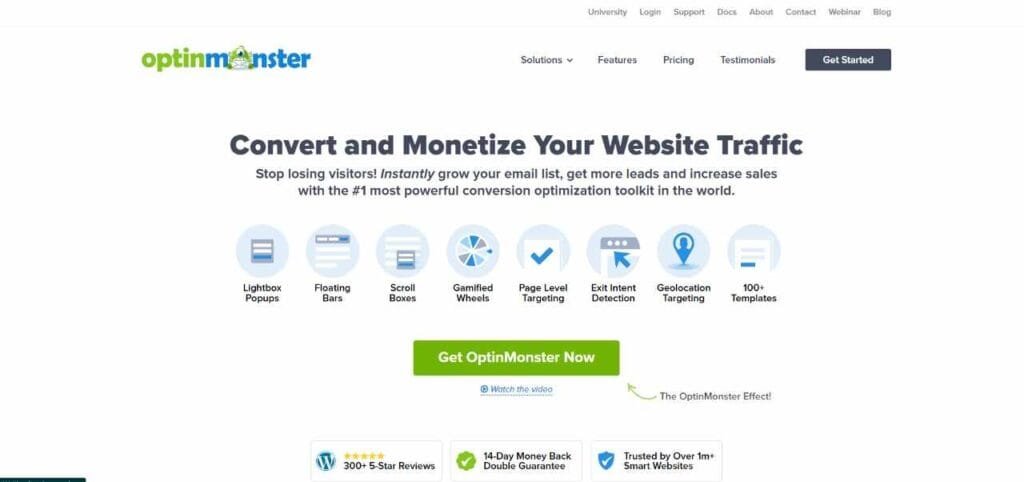
Features:
OptinMonster is renowned for its powerful lead generation capabilities. It provides drag and drop builders, making form creation seamless. It also boasts exit-intent technology, which triggers a popup when a user is about to leave, improving the chance of conversion. A/B testing, targeted campaign triggers, and full-screen welcome mats are other unique features.
Pricing:
Their pricing structure ranges based on functionality. The basic plan starts at $9/month (billed annually), while the Pro version, suitable for larger enterprises, is priced at $29/month (billed annually).
Pros:
- User-friendly with drag-and-drop functionalities.
- Advanced targeting and segmentation to cater to specific audiences.
- Mobile-specific popups to engage smartphone users.
Cons:
- Some advanced features are only available in the higher-tier plans.
- Initial learning curve for complete beginners.
#2. Sumo
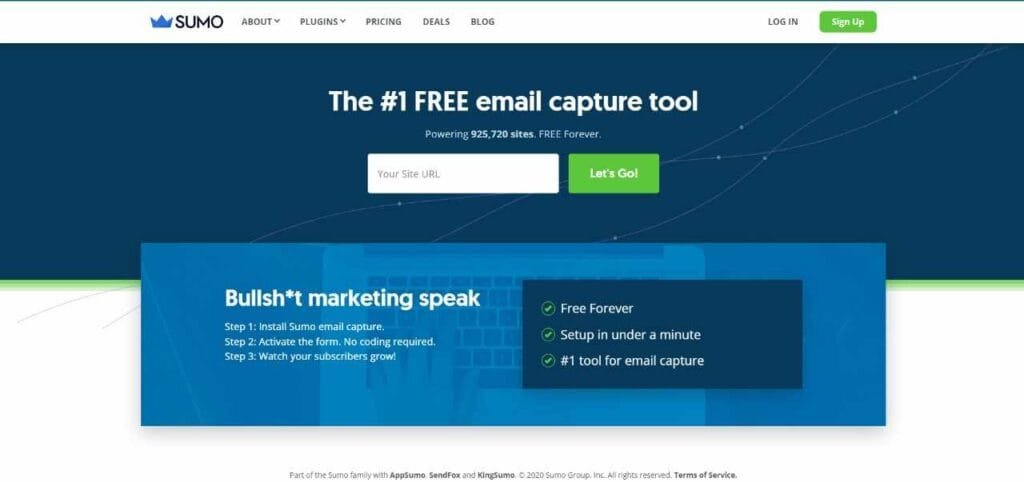
Features:
Sumo offers a suite of tools, particularly List Builder, which aids in collecting emails. It has heat maps to visualize where users click, an integrated social sharing feature, and is known for its e-commerce integrations, beneficial for online stores.
Pricing:
Sumo provides a free plan, ideal for startups, and their Pro plan begins at $39/month, offering advanced analytics and more templates.
Pros:
- Direct integration with WordPress, making it beginner-friendly.
- Provides a free version with decent functionalities.
- E-commerce specific tools enhance online store lead capture.
Cons:
- Advanced analytics only available in paid versions.
- The free version comes with Sumo branding.
#3. Thrive Leads
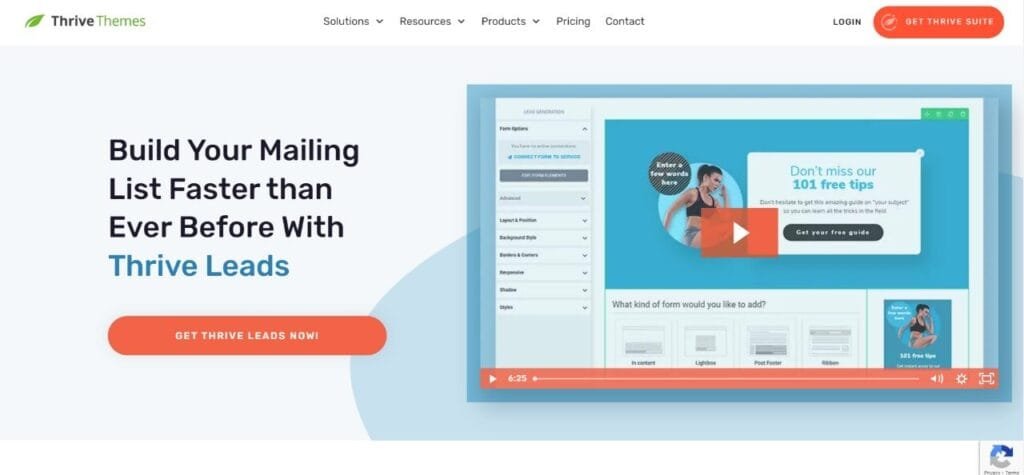
Features:
Thrive Leads is a WordPress-specific tool that offers advanced targeting, A/B testing capabilities, and a wide array of opt-in form types. Their SmartLinks feature detects returning visitors and shows them targeted messages.
Pricing:
A single license for Thrive Leads is priced at $67, offering lifetime updates. Membership, which provides access to all Thrive themes and plugins, is at $19/month.
Pros:
- One-time payment for the plugin.
- Efficient A/B testing capabilities to determine the most effective opt-in forms.
- Highly customizable forms.
Cons:
- Only available for WordPress users.
- Might be overwhelming for non-tech-savvy users due to numerous features.
#4. Convert Pro
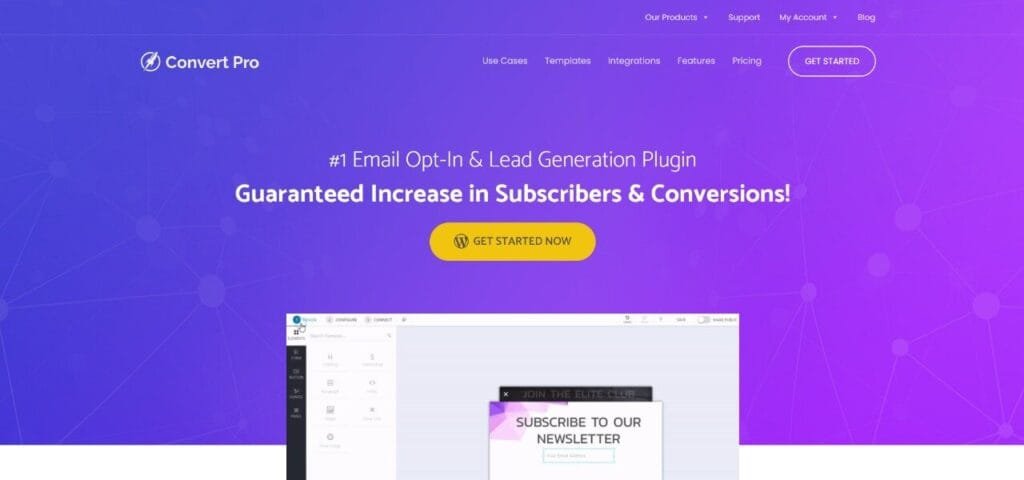
Features:
Convert Pro boasts a drag-and-drop editor, making form creation swift. It offers on-click popups, which engage users without being intrusive. The plugin also has advanced triggers based on time, user interaction, and even after content reading.
Pricing:
The pricing starts at $79/year for unlimited sites. A lifetime deal is available at $399, which might be beneficial for agencies.
Pros:
- Provides a vast library of templates.
- Multi-step popups enhance user engagement.
- Advanced triggers based on user behavior.
Cons:
- Could be pricey for individual bloggers.
- Integrations with some email providers can be tricky.
#5. LeadPages
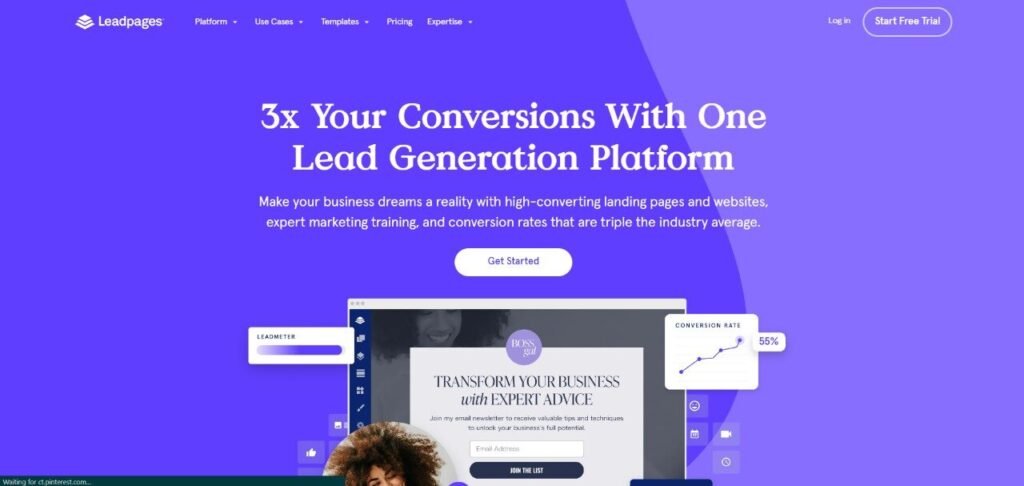
Features:
While LeadPages is more than just an opt-in tool, its lead boxes are exceptionally efficient. It offers high-converting landing pages, pop-ups, alert bars, and is optimized for mobile devices.
Pricing:
The Standard plan begins at $25/month (billed annually), while the Advanced plan, catering to larger enterprises, stands at $199/month.
Pros:
- Easy to use with a clear interface.
- Allows A/B testing to refine strategies.
- Provides SMS campaign functionality.
Cons:
- Higher-tier features like A/B testing are only available in costlier plans.
- Only integrates with a select few third-party tools.
Driving Conversions with Bottom-Funnel Content
Bottom-funnel content is all about sealing the deal. At this juncture, leads are very close to converting, but they need that final nudge. Enter product demos. Rather than tell your potential clients about your product’s value, show them. Product demos, be it a detailed video or a live walkthrough, provide a tangible understanding of how your offering addresses their specific needs. For a software product, this could mean demonstrating user-friendly features, for a physical product, perhaps a hands-on review showcasing its efficiency.
Importance of social proof at this stage: Testimonials, reviews, etc.
We’ve touched upon social proof earlier, but its significance is even more pronounced at the bottom-funnel. When leads are on the fence about converting, a testimonial from a satisfied client or a series of positive reviews can tip the balance in your favor. It’s not just about showcasing these endorsements, but strategically placing them where leads will see them, like a product page or even a checkout page.
Driving urgency and scarcity to promote action
Time-sensitive offers, limited stock alerts, or exclusive bonuses can create a sense of urgency. These tactics, rooted in the psychological principle of scarcity, drive leads to take action sooner rather than later. “Only 5 items left at this price” or “Exclusive bonus for the first 50 sign-ups” not only incentivizes quick action but also adds value to the offering.
Multi-Channel Content Distribution Strategies
Your content’s reach is amplified when disseminated across various social media platforms. However, a one-size-fits-all approach seldom works. A long-form LinkedIn post may not resonate on Twitter, and an Instagram story might not be apt for Facebook. By tailoring content to fit the nuances of each platform, you ensure maximum engagement. A handy tip? Repurpose a blog post into bite-sized tweets, engaging infographics, or even a short video snippet for different platforms.
Guest posting and content syndication
Broaden your reach by leveraging external platforms. Guest posting on reputable industry blogs not only drives referral traffic but also establishes your brand’s authority. Content syndication, on the other hand, allows your content to be featured on other sites, amplifying its reach.
Utilizing email marketing: Drip campaigns and segmented lists
Email remains one of the most potent channels for content distribution. But it’s more than just shooting out a newsletter. Drip campaigns, a series of automated emails, can nurture leads by providing them with timely, relevant content. Segmenting your email list based on user behavior or preferences ensures content relevancy, increasing the chances of engagement and eventual conversion.
User Engagement and Content Interactivity
Gone are the days when static content was the only way to engage your audience. Today, interactive content like quizzes, polls, and calculators reign supreme in the engagement arena. Why? They require active participation. A well-designed quiz can not only captivate a user but can also provide valuable insights into their preferences. Polls, on the other hand, make users feel valued, as their opinions contribute to a larger conversation. Calculators, especially in industries like finance or health, offer tangible value, helping users make informed decisions.
Benefits of interactive content for lead generation
Beyond the immediate engagement, interactive content is a goldmine for lead generation. Users are often willing to provide personal information in exchange for results or insights from a quiz or calculator. For instance, a fitness brand offering a ‘Calorie Intake Calculator’ can prompt users to sign up for personalized meal plans. Additionally, the data collected can be leveraged for personalized marketing campaigns, ensuring higher conversion rates.
Tools and platforms for creating engaging interactive content
Creating interactive content need not be daunting. Several tools, like Outgrow, Typeform, and Qzzr, allow businesses to craft captivating interactive content with ease. These platforms offer customizable templates, analytics to gauge engagement, and seamless integration with other marketing tools. By harnessing these resources, even businesses without a tech-savvy team can benefit from the power of interactive content.
#1. Outgrow
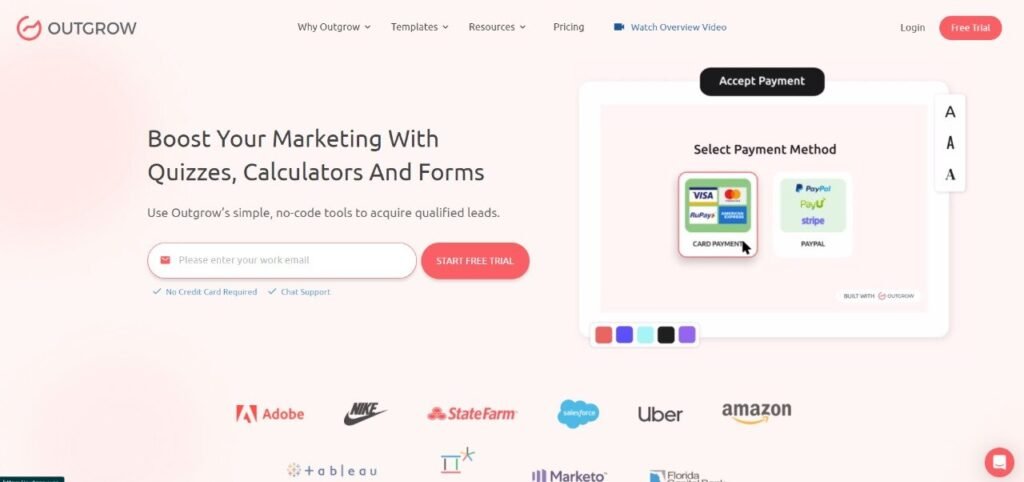
Features:
Outgrow is an interactive content tool specializing in creating quizzes, calculators, assessments, and polls. It boasts a user-friendly interface, analytics dashboard, and offers templates to speed up content creation.
Pricing:
Outgrow’s pricing starts from $14/month for the Freelancer plan, with the Business plan pegged at $95/month offering additional functionalities and customizations.
Pros:
- Diverse content formats supported.
- Intuitive interface suitable for beginners.
- Effective integration capabilities with CRMs and email marketing tools.
Cons:
- High-traffic websites might find it expensive.
- Some advanced features locked behind higher-tier plans.
#2. Ceros

Features:
Ceros provides a platform for creating immersive and interactive digital content experiences, including infographics, e-magazines, and microsites. It offers real-time collaboration, a vast library of assets, and detailed analytics.
Pricing:
Ceros adopts a custom pricing model based on user needs. Interested parties need to contact their sales team for a quote.
Pros:
- Provides a highly flexible and customizable platform.
- Supports real-time collaborations, aiding in team projects.
- Comprehensive analytics for performance tracking.
Cons:
- Lack of transparent pricing can deter small businesses.
- Has a steeper learning curve compared to other tools.
#3. Typeform
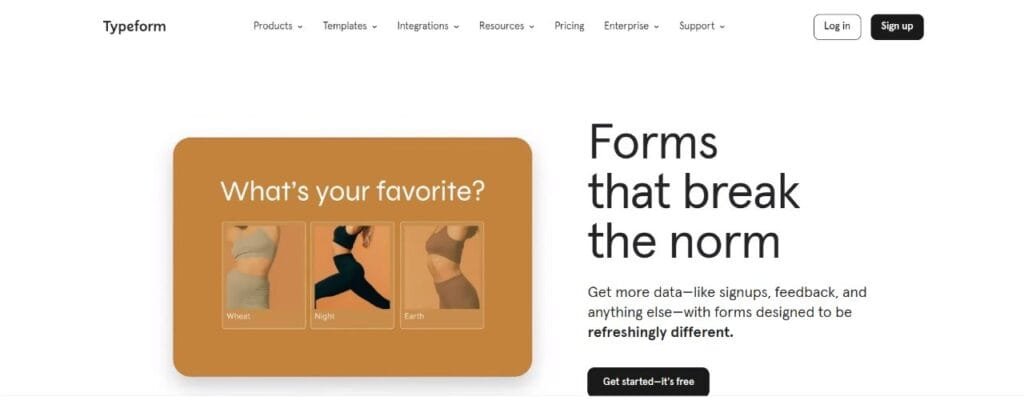
Features:
Typeform is known for its conversational forms and surveys, but it’s also adept at quizzes and polls. It provides a visually appealing interface, logic jumps for smart questioning, and integrates seamlessly with popular tools.
Pricing:
Typeform offers a basic free version. Its Professional plan, suitable for advanced needs, comes at $35/month.
Pros:
- Creates visually engaging and responsive forms.
- Intuitive user interface and design.
- Provides templates to kick-start content creation.
Cons:
- Advanced analytics only available in premium plans.
- Limited number of responses in the free version.
#4. Qzzr
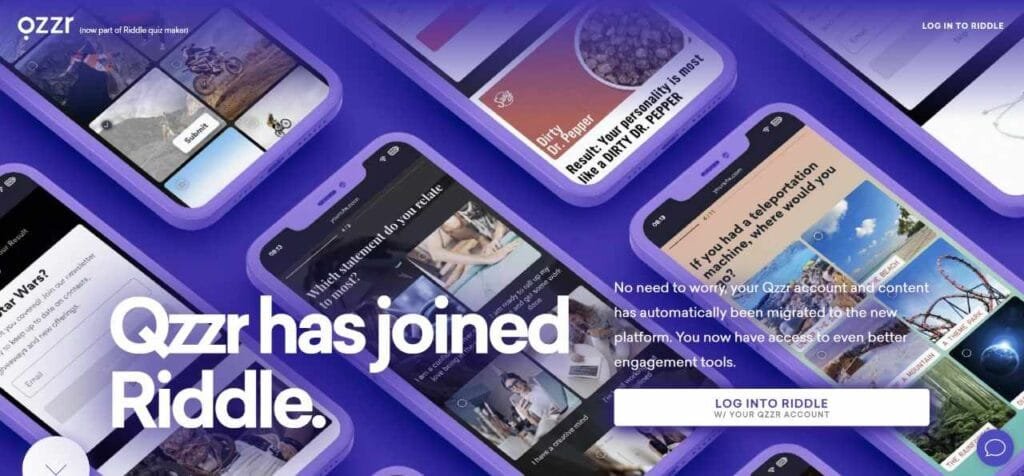
Features:
Qzzr focuses on creating engaging quizzes to captivate audiences. It allows for customizable design, lead generation forms within quizzes, and offers rich media integrations, enhancing the user experience.
Pricing:
Qzzr’s pricing starts at $24.99/month for the Basic plan, with the Pro plan available for $199.99/month.
Pros:
- Easy integration of lead generation forms within quizzes.
- Supports embedding videos and images for richer content.
- Provides detailed insights and analytics.
Cons:
- Can be pricey for smaller businesses.
- Limited content types compared to comprehensive platforms.
#5. ThingLink
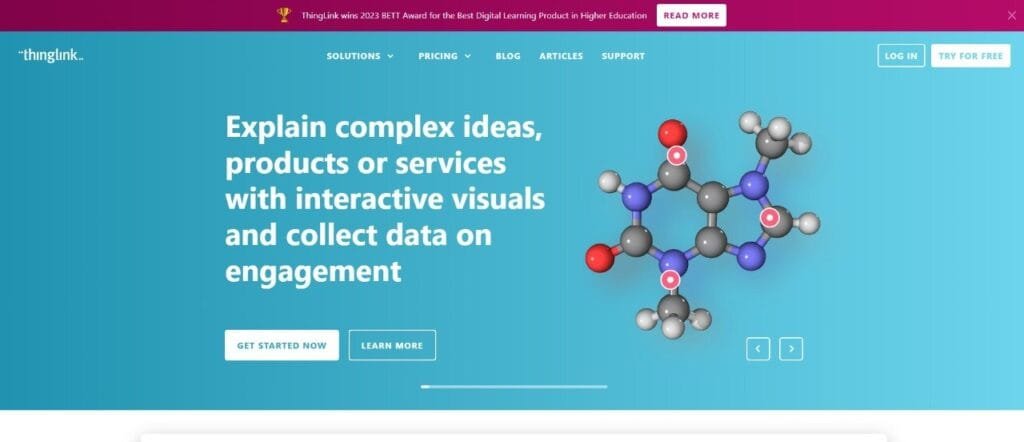
Features:
ThingLink is a tool that specializes in creating interactive images and videos. Users can add hotspots to images, linking to other content or media, enhancing engagement.
Pricing:
ThingLink’s Teacher plan starts at $35/year, while the Premium plan, which offers more features, is available for $125/year.
Pros:
- A unique way to enhance visual content interactivity.
- Supports 360-degree content and VR.
- Allows embedding a variety of media types.
Cons:
- Primarily focused on visual content, limiting diversity.
- Professional features require a premium subscription.
Remarketing and Retargeting Strategies
Imagine this: A user spends a significant amount of time on your product page, reads reviews, perhaps even adds the product to the cart, but doesn’t complete the purchase. Such users, who’ve shown a clear interest but haven’t converted, are prime candidates for remarketing. By tracking these users, businesses can tailor specific campaigns to nudge them towards conversion.
Setting up retargeting campaigns on platforms like Google Ads and Facebook
Platforms like Google Ads and Facebook offer robust retargeting options. For instance, with Facebook’s pixel, businesses can track users’ activities on their website and then serve them tailored ads on Facebook. Similarly, Google Ads allows brands to display ads to users who’ve previously visited their site as they browse other parts of the web. These strategically placed reminders can effectively bring users back to complete the action they initially refrained from.
Crafting compelling retargeted content to recapture interest
Successful retargeting isn’t just about showing the same ad again; it’s about rekindling interest. This may involve showcasing a limited-time discount, highlighting a feature the user might’ve missed, or even addressing common concerns related to the product. The key is to provide additional value or a fresh perspective to compel the user to revisit and convert.
Measuring the Effectiveness of Your Content Marketing
Measuring success is paramount in any marketing endeavor, and content marketing is no exception. Tools such as Google Analytics have become quintessential. Beyond just tracking website traffic, it helps understand user behavior, source of traffic, and conversion pathways.
Integrating UTM parameters in your URLs for campaigns can provide granular data about which content pieces are driving the most traffic and conversions. These insights are instrumental in refining your content strategy.
#1. LeadQuizzes
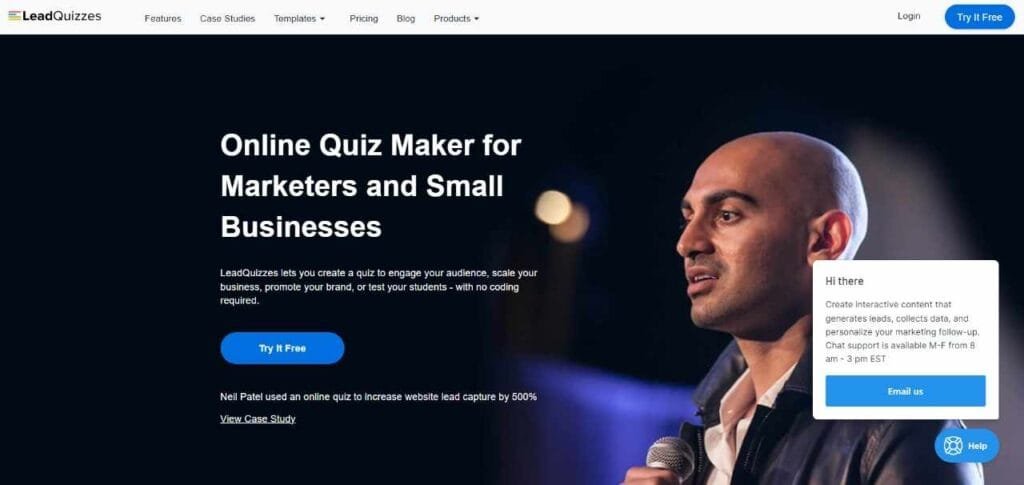
Features:
LeadQuizzes allows users to design interactive quizzes aimed at lead generation. It offers customizable templates, a drag-and-drop interface, and powerful analytics to measure engagement and conversions.
Pricing:
Starting at $37/month for the basic plan, with premium features available in higher tier packages that range up to $180/month.
Pros:
- Seamless integration with CRM and email marketing tools.
- User-friendly interface with no coding requirements.
- Proven templates that drive conversions.
Cons:
- Limited to quiz formats, restricting diverse content creation.
- Higher-tier pricing can be a deterrent for smaller businesses.
#2. Riddle
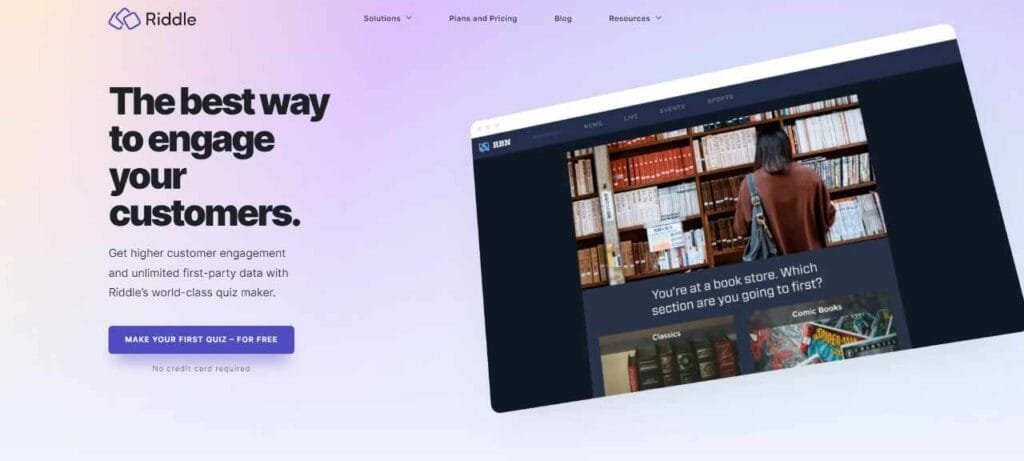
Features:
Riddle is a versatile tool for creating quizzes, polls, and surveys. With built-in lead generation forms and a vast library of templates, it’s designed to increase user engagement and collect leads.
Pricing:
Their Basic plan is priced at $29/month, while the Pro and Enterprise plans, offering more advanced features, come at $49/month and $249/month respectively.
Pros:
- A vast array of interactive content formats.
- Easy embedding on websites and social media.
- GDPR compliant lead collection.
Cons:
- Limited customizability in the Basic plan.
- Requires third-party integration for advanced analytics.
#3. SnapApp
Features:
SnapApp is more than just a quiz maker; it allows marketers to create interactive white papers, calculators, and even interactive videos. It emphasizes deep user engagement and lead conversion.
Pricing:
Pricing is based on a custom quote, tailored to specific business needs and scale.
Pros:
- Wide variety of interactive content formats.
- Robust analytics dashboard for performance insights.
- Seamless integrations with popular marketing platforms.
Cons:
- Custom pricing can be unclear for budget planning.
- Might be overkill for businesses only interested in basic quizzes.
#4. Paperform
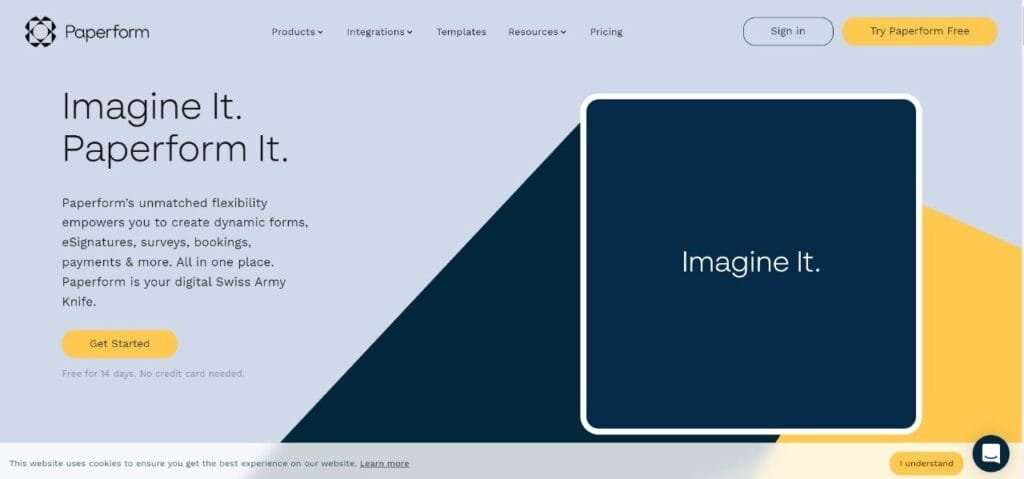
Features:
A tool tailored for creating engaging online forms, quizzes, and surveys. Paperform offers direct integrations with payment gateways, making it suitable for e-commerce ventures as well.
Pricing:
The Essentials package starts at $15/month, with the Pro and Agency packages at $39/month and $99/month, offering more features.
Pros:
- Direct payment gateway integration for sales-driven quizzes.
- Intuitive design interface with a plethora of customization options.
- Supports scheduling and conditional logic.
Cons:
- Lacks the advanced analytics of specialized quiz platforms.
- Limited third-party app integrations in the basic plan.
#5. Interact
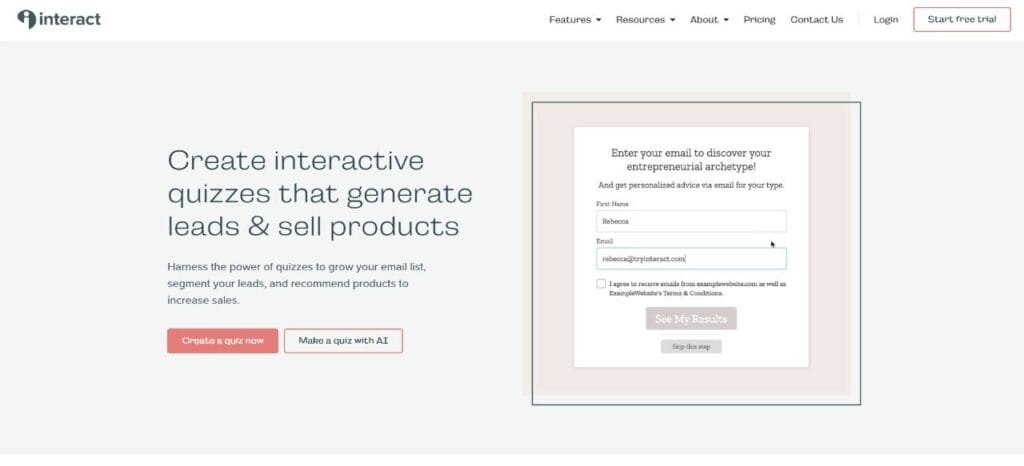
Features:
Interact is a platform dedicated to creating shareable quizzes for lead generation. It boasts a straightforward design interface, robust analytics, and multiple integrations to enhance marketing strategies.
Pricing:
The Lite plan starts at $17/month, while more feature-rich options are available in the Growth and Pro plans priced at $53/month and $125/month.
Pros:
- Offers templates designed for specific industries.
- Comprehensive branching logic for personalized quiz paths.
- GDPR compliant with robust security features.
Cons:
- Limited to quizzes, lacking diversity in interactive content types.
- High-tier pricing for advanced integrations and analytics.
Conversion rate optimization (CRO) and its significance
While driving traffic to your content is essential, what’s even more crucial is the conversion rate. It’s not enough for users to simply view your content; taking the desired action is the endgame. CRO involves understanding the barriers preventing conversions and strategically eliminating them. A/B testing different content structures, CTAs, or even images can dramatically influence conversion rates. Simply put, CRO ensures that your content doesn’t just attract but effectively converts.
Continual refinement based on metrics
In the dynamic world of digital marketing, stagnation is the enemy. Continual refinement is the name of the game. As you gather data on content performance, it’s imperative to iterate. Perhaps a blog post format isn’t resonating but infographics are. Maybe users from organic search convert better than those from paid campaigns. These insights, when acted upon, can significantly enhance the ROI of your content marketing endeavors.
Challenges and Potential Pitfalls in Content Marketing for Leads
One of the most prevalent pitfalls in content marketing is creating generic, one-size-fits-all content. In an age of personalization, generic content is a sure-shot way to alienate your audience. Users crave content that speaks directly to them, addresses their unique needs, and provides tangible value. Steering clear of generic narratives and embracing a targeted, audience-centric approach is pivotal.
Over-promotion vs. valuable content
Striking the right balance between promotion and providing value can be tricky. While it’s natural to want to promote your products or services aggressively, overdoing it can deter users. Content that’s too salesy can erode trust. The essence of content marketing lies in providing genuine value, educating the user, and then subtly guiding them towards a conversion, rather than bombarding them with overt promotions.
Ensuring GDPR and other data collection compliance
In an era where data privacy has taken center stage, compliance with regulations like GDPR is non-negotiable. As you employ content marketing strategies, especially those involving data collection for lead generation, it’s vital to ensure transparency. Clear communication about data usage, offering easy opt-outs, and maintaining the sanctity of collected data can go a long way in building trust and avoiding potential legal pitfalls.
Integrating Advanced Technologies: AI and Machine Learning
As we step into the future of content marketing, technology plays a pivotal role. Predictive analytics, powered by AI, can forecast trends, ensuring your content remains ahead of the curve. Instead of relying on past data, you can now anticipate user needs and preferences. This proactivity allows brands to craft content that resonates even before a user realizes their need, establishing your brand as a thought leader in your industry.
AI-driven personalization for content recommendations
Personalization isn’t just about addressing your user by their first name. AI dives deep into individual user behaviors, segmenting audiences not just based on demographics but on preferences, past interactions, and predictive behavior. This enables the delivery of content that’s hyper-relevant to each user. Think of it as having a one-on-one conversation with each of your users, understanding their unique pain points, and offering precise solutions.
Chatbots and interactive assistants for lead capture
The age-old forms for lead capture are evolving. Today, chatbots and interactive assistants, backed by AI, provide a dynamic way of engaging users. These bots can answer queries, recommend content, and even capture lead details. More importantly, they’re available 24/7, ensuring that you never miss out on a potential lead. Their real-time, conversational approach can dramatically increase engagement and conversion rates.
Building Relationships: From Leads to Loyal Customers
Capturing a lead is just the beginning of a relationship. Nurturing these leads is where the real magic happens. It’s a well-known fact that nurtured leads are more likely to convert than cold ones. This involves a series of touchpoints, providing value, and building trust over time. Through consistent engagement and by offering solutions to their evolving needs, you can guide leads down the sales funnel more effectively.
Content strategies for post-conversion stages
The journey doesn’t end at conversion. Post-conversion content strategies aim to upsell, cross-sell, or simply retain the customer. This could be in the form of user guides, how-to videos, or loyalty program details. By continuing to provide value even after a sale, brands can ensure customer loyalty and potentially convert them into brand ambassadors.
The role of value addition and continuous engagement
In today’s saturated market, mere transactional relationships don’t cut it. The brands that stand out are those that consistently add value to their users. Whether it’s through educational content, loyalty perks, or community building, continuous engagement ensures your brand remains top-of-mind. This not only aids in retention but also in referrals, amplifying your lead generation efforts through word-of-mouth.
Wrapping it Up
Content marketing remains a formidable tool in the digital age, especially for lead generation. Leveraging quality content, understanding your audience, and integrating advanced technologies can position any business ahead of its competitors.
As we evolve, it’s imperative to embrace innovation, prioritize personalization, and consistently deliver value to transform leads into loyal customers. With dedication and strategic execution, content marketing can be the keystone of your brand’s growth and success.
Read Next:
- How to Create a Digital Marketing Plan: The Complete Guide
- How CRM can Skyrocket your Customer Retention! (and Boost LTV)
- How to Create a Great Infographic that People Want to Share: Tips from Experts
- How to Use Popup Maker: An Explainer
- Key Elements of a Website Development Agreement: An International Perspective






















Comments are closed.